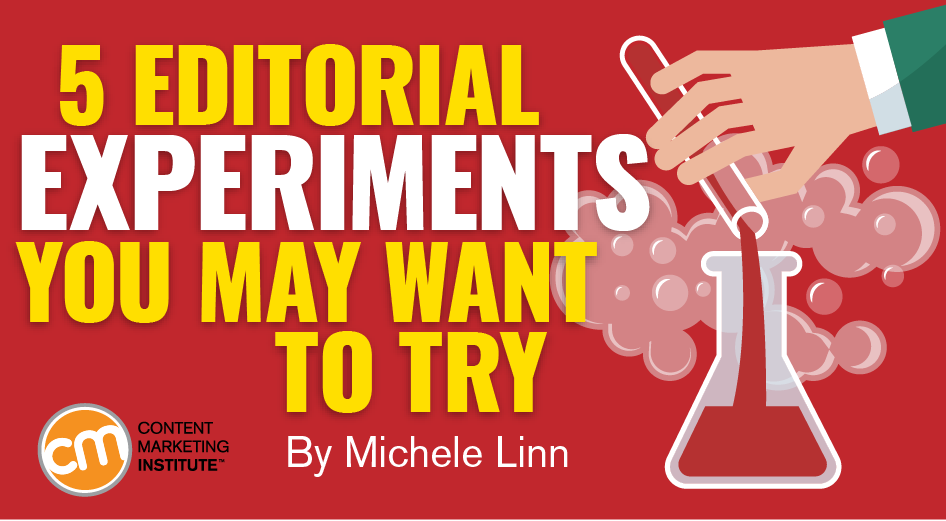Back in the early days of CMI, we used to experiment all the time. Instead of only publishing new posts, we wanted to see how people would respond to seeing our best posts. Covering event sessions more regularly Over the years, we have tried a lot of ways to cover the expert insight offered in the sessions from Content Marketing World and Intelligent Content Conference. A few things we have learned: Having our editorial team write up the lessons from sessions is typically an effective way to mine topics that other writers may not be covering. This summer, we will begin covering one Content Marketing World or Intelligent Content Conference session every week on the blog. However, as the content marketing space gets noisier, we are experimenting with vertical niche content once again. Look for a series of posts that covers the key verticals where we know our audience lives. So, this summer, we’re instituting more formal reader surveys. Additionally, the new format takes less production time, which frees up some of the writer’s time each week for other work. She is one of those people who truly loves what she does and who she works with.

Back in the early days of CMI, we used to experiment all the time. (OK … sometimes “experiment” was code for “we don’t quite know what we’re doing, but let’s try this …”) As our business matured, we focused more of our attention on what works and putting processes around those things to make them the most efficient and effective as possible.
But just because we better understand what works doesn’t mean we should stop trying new things.
So our editorial team is conducting a few experiments this summer, and we want to bring you along on that adventure. Our goal is to be transparent about what’s working – and what’s not – to ultimately help you in your content marketing efforts.
But first, a story
Before we look at upcoming experiments, I wanted to share one we have tried – with surprising results.
About 18 months ago, we decided to republish blog posts that have performed well. Our hypothesis was that no one can read everything we publish when it goes live – and new subscribers likely aren’t delving into what we already produced. Instead of only publishing new posts, we wanted to see how people would respond to seeing our best posts.
While we sometimes update these posts based on current information or new examples, other posts are republished with few changes. I’ll be frank. Many people on the team thought this wasn’t a stellar idea – they did not like the idea of us not publishing something new. And, I had people outside CMI express the same assumption, as exemplified in this email excerpt from a contributing author: “I figure fresh, new, and original is far better than re-running the same piece!”
But you know what? No one complained that they didn’t get brand new content each day. (And we don’t keep it secret either. We include a special logo – back by popular demand – on all of these posts.)

And republished posts – whether changed minimally or significantly – perform similarly. Our republished posts typically are some of the top-performing posts each month, generating high subscribers, traffic, and social share metrics.
So, what else can we try that may go against common opinion? Or what can we do to shake things up a bit? Here are some of the things you’ll see this summer.
1. Covering event sessions more regularly
Over the years, we have tried a lot of ways to cover the expert insight offered in the sessions from Content Marketing World and Intelligent Content Conference. Live blogging was a stressful fail. Curating other people’s coverage was time-consuming and it didn’t really help our mission. Our current strategy is to cover sessions on an ad-hoc basis.
A few things we have learned:
- Having our editorial team write up the lessons from sessions is typically an effective way to mine topics that other writers may not be covering.
- Using a combination of data from attendee surveys and anecdotal feedback, we can better choose which sessions to cover.
- It’s OK to abandon plans to write about a session after we watch the presentation. Some sessions are fabulous in person, but they don’t translate well into a post.
- Rushing to cover the sessions immediately after the event isn’t necessary. Much of the content at CMWorld is evergreen so we can cover it year-round. Time-sensitive topics are prioritized for earlier coverage.
This…

COMMENTS